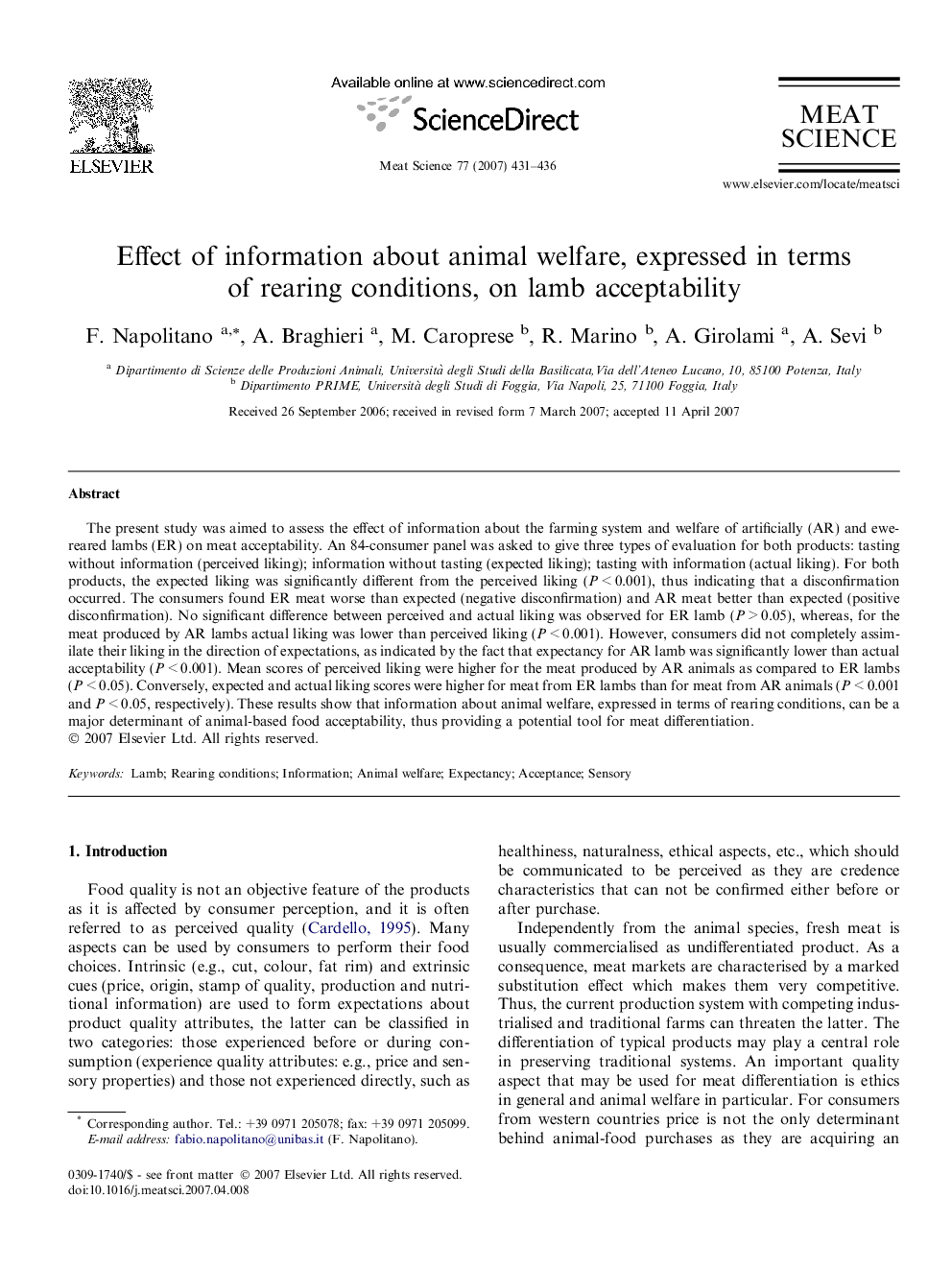| Article ID | Journal | Published Year | Pages | File Type |
|---|---|---|---|---|
| 2451634 | Meat Science | 2007 | 6 Pages |
The present study was aimed to assess the effect of information about the farming system and welfare of artificially (AR) and ewe-reared lambs (ER) on meat acceptability. An 84-consumer panel was asked to give three types of evaluation for both products: tasting without information (perceived liking); information without tasting (expected liking); tasting with information (actual liking). For both products, the expected liking was significantly different from the perceived liking (P < 0.001), thus indicating that a disconfirmation occurred. The consumers found ER meat worse than expected (negative disconfirmation) and AR meat better than expected (positive disconfirmation). No significant difference between perceived and actual liking was observed for ER lamb (P > 0.05), whereas, for the meat produced by AR lambs actual liking was lower than perceived liking (P < 0.001). However, consumers did not completely assimilate their liking in the direction of expectations, as indicated by the fact that expectancy for AR lamb was significantly lower than actual acceptability (P < 0.001). Mean scores of perceived liking were higher for the meat produced by AR animals as compared to ER lambs (P < 0.05). Conversely, expected and actual liking scores were higher for meat from ER lambs than for meat from AR animals (P < 0.001 and P < 0.05, respectively). These results show that information about animal welfare, expressed in terms of rearing conditions, can be a major determinant of animal-based food acceptability, thus providing a potential tool for meat differentiation.
